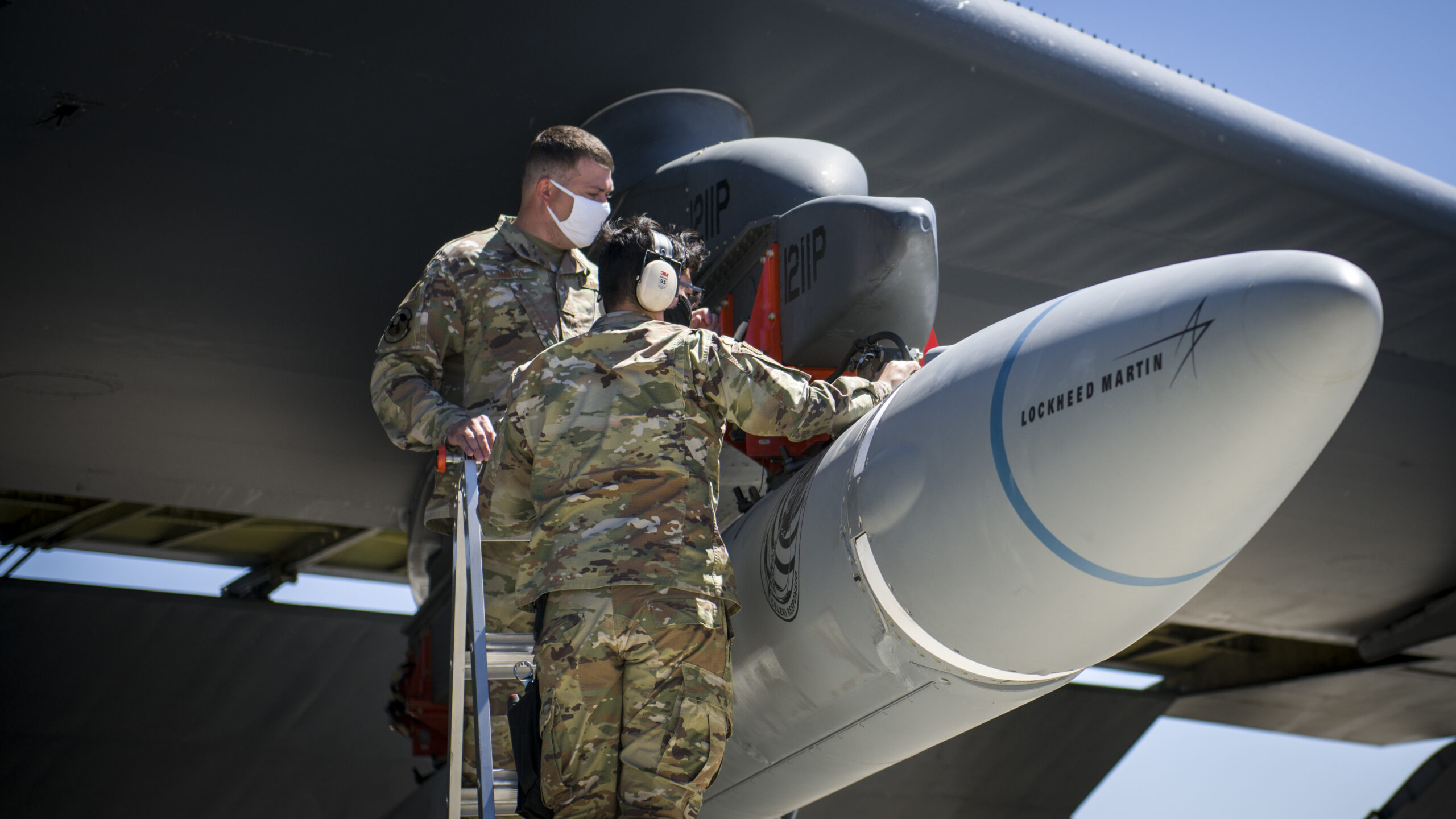
Master Sgt. John Malloy and Staff Sgt. Jacob Puente, both from 912th Aircraft Maintenance Squadron, secure the AGM-183A Air-launched Rapid Response Weapon Instrumented Measurement Vehicle 2 as it is loaded under the wing of a B-52H Stratofortress at Edwards Air Force Base, California, Aug. 6. (Air Force photo by Giancarlo Casem)
WASHINGTON — After a rocky development and a recent failed test, the Air Force has decided it will not go on to buy the hypersonic Air-launched Rapid Response Weapon (ARRW), the service’s top acquisition official told lawmakers today.
The service “does not currently intend to pursue follow-on procurement of the ARRW once the prototyping program concludes,” Air Force acquisition chief Andrew Hunter said in a written statement to the House Armed Service’s tactical air and land forces subcommittee, but still sees value in a little more research and development for the doomed weapon. The Air Force asked for some $150 million in its fiscal 2024 budget request for R&D for the program.
The FY24 request will finish out all-up-round tests, two of which remain, “to garner the learning and test data that will help inform future hypersonic programs” with the additional potential of “leave behind capability support.” ARRW’s cancellation did not come up during the hearing itself. The Air Force’s decision to forego procurement was first reported by Bloomberg.
RELATED: Hypersonic ship-killer: Navy taps Lockheed, Raytheon to start developing HALO missile
News of the Air Force’s acquisition decision comes after service secretary Frank Kendall suggested to a separate House committee Tuesday that while he took a dim view of ARRW, there was still hope the program might survive, depending on the outcome of the next two tests. In his testimony, Kendall had revealed a recent ARRW test was “not a success.”
The program’s denouement is a blow to the Pentagon’s efforts to field an arsenal of hypersonic weapons, which top officials have warned are already operational for Russia and China. Though the ARRW was seen as potentially the United States’ first operational hypersonic weapon, the program was beset by an early string of failed tests before eventually achieving a first, and successful, all-up-round evaluation in December. Lockheed Martin, prime contractor on the ARRW, told Breaking Defense after Kendall’s testimony that the company “is committed to developing hypersonic technology on an accelerated timeline to meet this critical national security need.”
The ARRW is one of two key hypersonic efforts for the Air Force. The other, the Hypersonic Attack Cruise Missile (HACM), is still under development.
Kendall told lawmakers Tuesday that the Air Force is now “more committed” to HACM than ARRW due to its ability to integrate with a greater number of platforms and “reasonably successful” development. According to Air Force budget documents, the service is requesting $381 million in FY24 to continue rapid prototyping work for the cruise missile.






















